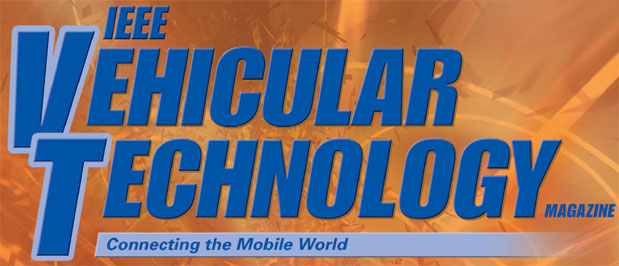Call For Papers:
IEEE Future Networks Special Issue on 6G Technologies and Applications (3)
Important Dates |
|
|---|---|
| Manuscript Submission by: | 26 April 2021 (extended) |
| First Round Reviews by: | 14 June 2021 |
| Second Round Submissions by: | 23 June 2021 |
| Second Round Reviews / Editorial Decision: | 6 September 2021 |
| Publication: December 2021 | |
5G networks have made a significant step towards developing a low latency tactile access network, opening new opportunities for innovative automation of network resources and operations. As we progress on the deployment of 5G, work to define what 6G networks is under way. Initial ideas were presented in the first two special issues on 6G, published in the IEEE Vehicular Technology Magazine (September 2019 and December 2020). This series will lay down the concepts, basic functionalities, supported services and breakthrough technologies for 6G networks. The next generation of communications networks will resemble the nervous system, making use of new spectrum to create new smart infrastructures that feature proactive, secure and adaptive paradigms that can be enabled by AI/ML. Smart 6G networks should address energy efficiency in the telecommunications sector and contribute to United Nations Sustainable Development Goals and the goals of the European Green Deal, among others. With the increase of large autonomy of systems, the protection of the ‘nervous system’ against malicious attacks also becomes important. Moreover, the system autonomy and the large number of distributed sensor systems demand the simultaneous integration of distributed policies and new energy-harvesting concepts. The move to machine-type communication demands radical separation of service processing and probably higher strict KPIs. These technologies and challenges will be considered within the context of 6G networks.
This series is sponsored by the IEEE Future Networks initiative and is aimed at helping the research and industrial communities define and shape the architecture, technologies and services for 6G networks. We are soliciting original contributions that have not been published and are not currently under consideration by any other journals. The topics of interest include, but are not limited to:
- 6G Dimensions and KPI requirements
- Methods and technologies to harness new spectrum
- AI/ML assisted PHY and networking
- MU-MIMO and new antenna technologies
- New medium access technologies
- 6G networks and solutions including 6G-U and private networks
- New core network entities and interfaces
- Network assurance and service provisioning
- Cloudification, bigdata, orchestration, multi-access edge computing and IoT
- Cyber security and encrypted connectivity
- Wireless networking using the optical spectrum: LiFi, visible light communications (VLC), optical camera communication (OCC) and free-space optical (FSO) communications
- Quantum communications
- Terahertz communications
- Green 6G networks, wireless harvesting technologies and energy efficiency
- 6G satellite and UAV networks
- 6G-enabled vertical applications and services
Submissions should clearly identify how they relate to 6G and how they would progress beyond current 5G technologies. Submitted papers should contain state-of-the-art research material presented in a tutorial or survey style. All manuscripts should contain state-of-the-art material presented in a tutorial or survey style, and must adhere to IEEE VTM guidelines IEEE VTM guidelines.
Submit PDF version of complete manuscripts to http://mc.manuscriptcentral.com/vtm-ieee
Guest Editors
Anwer Al-Dulaimi
EXFO, Canada
anwer.al-dulaimi@exfo.com
Klaus David
Kassel University, Germany
david@uni-kassel.de
Harald Haas
The University of Edinburgh, UK
h.haas@ed.ac.uk
Rose Hu
Utah State University, USA
rose.hu@usu.edu

